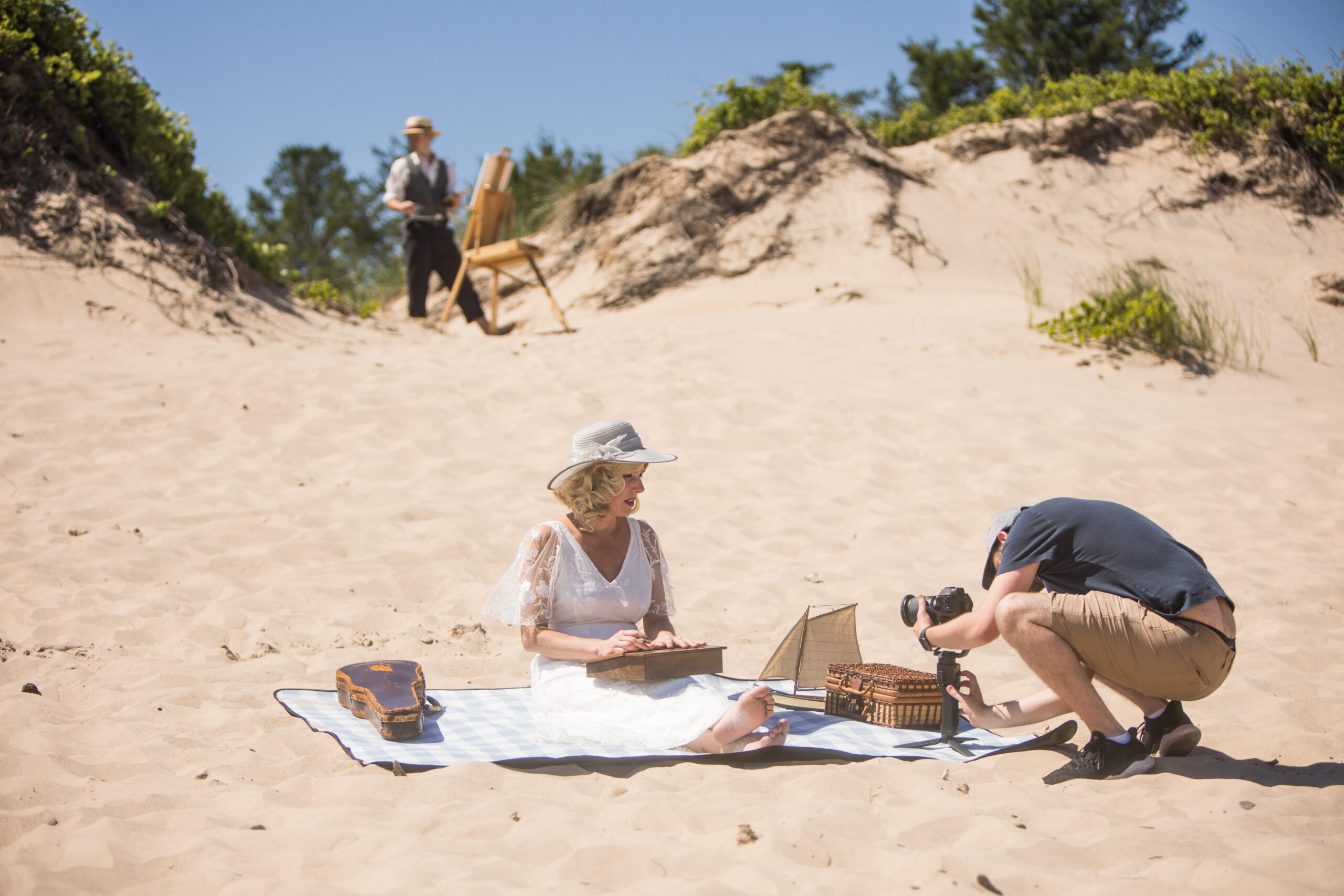
I am really excited to learn, record, and do the video of this beautiful piece in 2021. I am originally from IN, as well as Jeffrey, and having gone to the Indiana Dunes State Park several times as a kid it was great to see it become our newest National Park in 2019.
Here is a bit of back ground on the composition in the composer Jeffrey Hoover’s words. “To paraphrase an idea from Leo Tolstoy’s book What is Art?, I believe that true art can not only emerge from “native soil” but also from “native sand.” Although I grew up in Northern Indiana, I didn’t experience the Indiana Dunes for myself until I was an adult. ‘Such an opportunity I missed in my youth, but later I was able to take in this marvelous and unique place where the northern edge of State of Indiana and Lake Michigan caress each other. To consider the wildlife, human inhabitation, and the natural landscape and geology leaves one with a sense of awe.
To be honest, it wasn’t an easy to write this music, as the features and history of the Indiana Dunes presented a great and wonderful challenge for musical representation. After all, I’m a Hoosier. I was born in Indiana and grew up in Indiana. I wrote and re-wrote this music. You see, it’s not easy to funnel our experiences into just what we can hear. To help with all this, I did come up with an idea that seemed natural. I presented each movement as a “picture postcard,” with the concept of a single thought being scrawled rapidly in my tight handwriting on the back of it. I know this “dates me” and reveals where I fall on a larger timeline of popular cultural history, (who talks about “picture postcards” these days) but again, I have to be honest.
Part memory and part imagination, the vivid images in my mind suggested what had to be composed, and how it would be composed:
• “i ran the dunes” with feet plowing through shifting sand, centering around the pitch “A 440” (the common tuning note of the violin and the full symphony orchestra), while the interval of the minor second (a half-step) keeps shifting and twisting the melody;
• Drones and undulating passages, with musical fountains erupting, mimicking how “the crashing breakers look cold to me”;
• Standing on the Lake Michigan shore, one can see “the old paper mill” on the shoreline, in this music representing the presence of contemporary Man. The mechanical rhythms and the occasional waspishness of the music reminds us of the process used to create paper.
• “a great Blue Heron” stands proud, portraying the wildlife of the Indiana Dunes;
• “i saw heat lightning over the lake” is a personal sharing of the visual experience of the pyrotechnics of heat lightning in Northern Indiana in the summer;
• “you should have seen the sugar dance” shares the energy felt when seeing a preserved cultural dance by First Nations peoples of Northern Indiana (I personally grew up in a town – Kewanna, Indiana – named after an important Pottawatomie Chief, Chief Key-wan-nay);
• “the sky was on fire from the sunset” in some respects is a bookend to “i ran the dunes.” Long, linear musical gestures reflect the waves of the water and the sunset over Lake Michigan.”
–Jeffrey
Composer Biography:
Jeffrey Hoover’s works – ranging from soloist to symphony orchestra – have received recognition through the Premio Musicale Città di Trieste (symphonic composition), the 2° Concorso Internazionale L. Russolo (electro-acoustic music), Mu Phi Epsilon, the Lancaster Fine Arts Festival, Universal Edition / SMP Press Contemporary Music award, grants, publications fellowships and more than 25 commissions. He is a member of the ACME roster of Mu Phi Epsilon, recognized for distinguished achievement as a composer.
One unique aspect of Hoover’s creative output is the joining of his compositions with his paintings, creating synergetic works that intrigue and captivate audiences and performers. His work is seen in exhibitions and in concerts where his paintings are projected while musicians perform his music. Hoover’s experience as a performer includes both classical and jazz music, as saxophonist and conductor. His book The Arts and Society: Making New Worlds is published by Kendall Hunt Publishing.
Jeffrey Hoover was born on September 11, 1959, in Anderson, Indiana. He holds a Ph.D. in Fine Arts (Composition and Interdisciplinary Fine Arts) from Texas Tech University, as well as a M.M. and Bch.Sc. from Ball State University. His career in higher education has included both faculty and administrative appointments.
Contacting the Composer Directly
jeffreyhooverart@gmail.com
+1 (309) 264-9631
